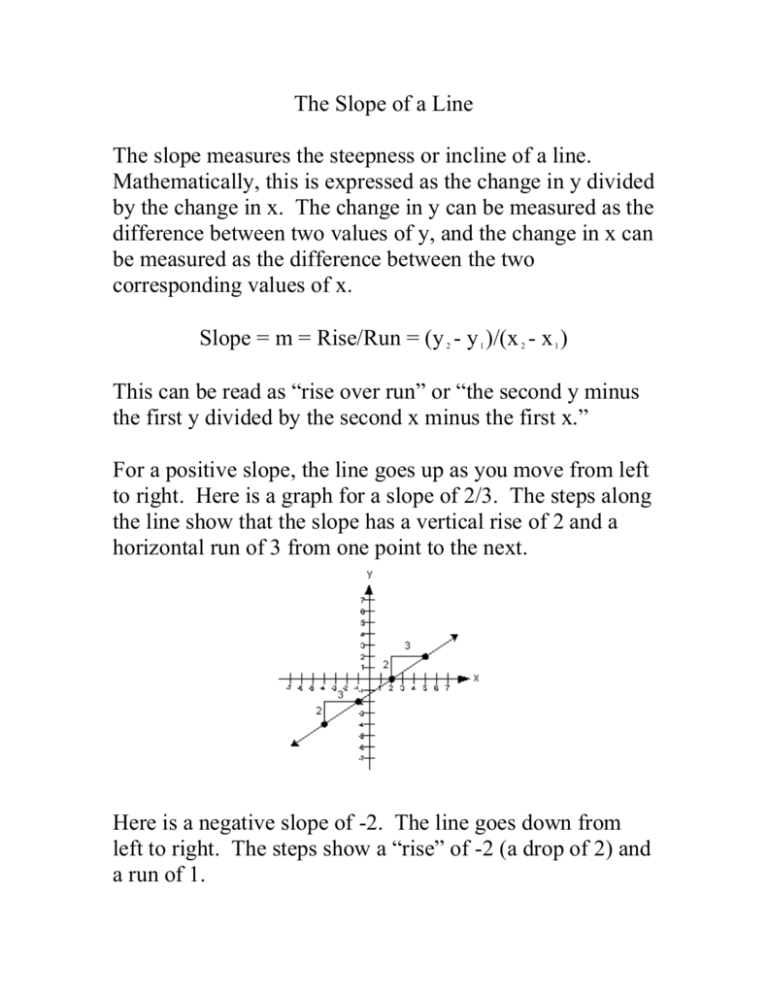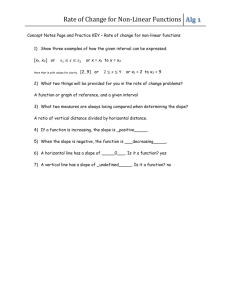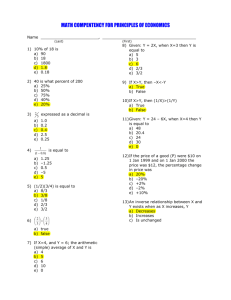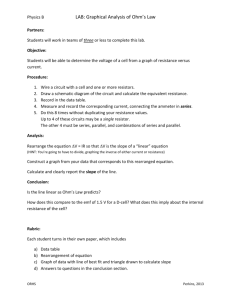The Slope of a Line
advertisement

The Slope of a Line The slope measures the steepness or incline of a line. Mathematically, this is expressed as the change in y divided by the change in x. The change in y can be measured as the difference between two values of y, and the change in x can be measured as the difference between the two corresponding values of x. Slope = m = Rise/Run = (y - y )/(x - x ) 2 1 2 1 This can be read as “rise over run” or “the second y minus the first y divided by the second x minus the first x.” For a positive slope, the line goes up as you move from left to right. Here is a graph for a slope of 2/3. The steps along the line show that the slope has a vertical rise of 2 and a horizontal run of 3 from one point to the next. Here is a negative slope of -2. The line goes down from left to right. The steps show a “rise” of -2 (a drop of 2) and a run of 1. A slope of zero is a horizontal line (a rise of 0). If a line is vertical, it has no slope (because a run of zero would require you to divide by zero, which is undefined).





